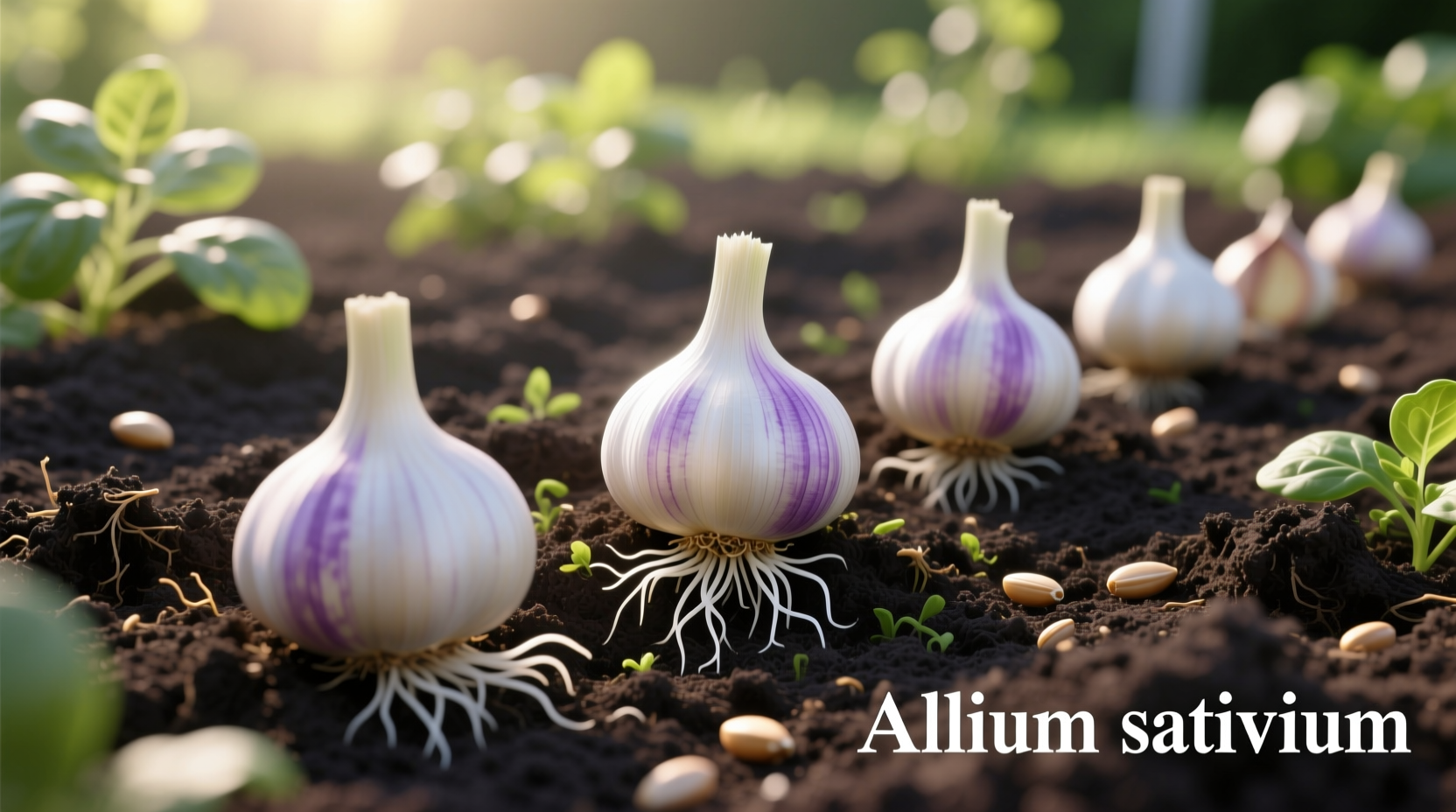Discover exactly how to grow flavorful, robust garlic bulbs in your own garden with this comprehensive guide. Whether you're a first-time gardener or looking to improve your harvest, you'll learn the precise timing, soil preparation techniques, and seasonal care routines that lead to plump, disease-resistant bulbs. We've distilled decades of agricultural research and practical growing experience into actionable steps that work for both hardneck and softneck varieties.
Planning Your Garlic Garden
Selecting the right garlic variety for your climate is the foundation of a successful harvest. Hardneck varieties like 'Music' or 'German Extra Hardy' thrive in colder zones (3-7) and produce edible scapes, while softneck types such as 'Silverskin' or 'Inchelium Red' perform better in warmer regions (7-9) and braid easily for storage. The Cornell Cooperative Extension confirms that matching your variety to your USDA hardiness zone increases yield by up to 40% compared to mismatched selections.
| Variety Type | Best Zones | Storage Life | Flavor Profile |
|---|---|---|---|
| Hardneck | 3-7 | 4-6 months | Bold, complex, varies by cultivar |
| Softneck | 7-9 | 8-12 months | Milder, consistent heat |
| Rocambole | 4-7 | 5-7 months | Rich, nutty, easy to peel |
This fact comparison shows why choosing the appropriate variety matters for your specific growing conditions. Rocambole types, while technically a hardneck subgroup, offer superior flavor complexity but require precise temperature conditions during bulb formation.
Soil Preparation Essentials
Garlic demands exceptional soil conditions to develop properly sized bulbs. Prepare your planting area 2-3 weeks before planting by incorporating 3-4 inches of well-rotted compost and a balanced organic fertilizer (5-10-10). The University of Minnesota Extension emphasizes that soil pH between 6.0-7.5 prevents nutrient lockout and reduces disease pressure. Raised beds 8-12 inches high improve drainage in heavy soils, which is critical since waterlogged conditions cause cloves to rot before sprouting.
Planting Process Step-by-Step
Follow these precise steps for optimal planting success:
- Separate cloves from bulb 1-2 days before planting (keep papery husk intact)
- Plant individual cloves pointy-end up at 2-inch depth
- Space cloves 4-6 inches apart in rows 12-18 inches apart
- Cover with soil and apply 3-4 inch mulch layer (straw or shredded leaves)
- Water thoroughly after planting, then only during extended dry periods
Timing varies by climate zone: plant 4-6 weeks before first frost in northern regions (September-October), or 2-3 weeks before first frost in southern zones (October-November). The USDA Agricultural Research Service confirms that proper planting depth and timing directly correlate with bulb size and disease resistance.

Seasonal Care Guide
Maintain consistent moisture during active growth (February-May), providing 1 inch of water weekly. Stop watering 2-3 weeks before harvest when lower leaves begin yellowing. Remove flower scapes from hardneck varieties when they curl to redirect energy to bulb development. Monitor for common pests like onion thrips and use neem oil spray at first sign of infestation. The Penn State Extension reports that regular scape removal increases bulb size by 15-25% in hardneck varieties.
Harvesting & Curing Techniques
Harvest when 40% of leaves have turned brown (typically late June-July). Carefully dig bulbs using a garden fork to avoid damage. Cure bulbs in a warm, dry, shaded location with good airflow for 3-4 weeks. Properly cured garlic develops protective outer layers that prevent mold and extend storage life. The curing process transforms raw garlic into its characteristic pungent flavor as alliinase enzymes activate.
Storage Solutions for Maximum Longevity
Store cured bulbs in mesh bags or open baskets in a cool (55-65°F), dark location with 60-70% humidity. Avoid refrigeration, which triggers sprouting. Hardneck varieties last 4-6 months while softnecks can remain viable for 8-12 months. Check bulbs monthly and remove any showing signs of decay to prevent spoilage spread.
Troubleshooting Common Problems
Small bulbs: Usually caused by late planting, poor soil nutrition, or overcrowding. Moldy cloves: Indicates excessive moisture during storage or improper curing. Yellowing leaves: Could signal nutrient deficiency (nitrogen) or fungal disease. Rotate planting locations every 3-4 years to prevent soil-borne diseases from accumulating.
Frequently Asked Questions
Can I grow garlic from supermarket cloves?
While possible, supermarket garlic often carries sprout inhibitors and may not be adapted to your climate. Garden center or seed catalog varieties offer better disease resistance and regional adaptation for reliable harvests.
Why are my garlic bulbs splitting open before harvest?
Premature splitting typically occurs from inconsistent watering during bulb formation or harvesting too late. Maintain even soil moisture during bulbing phase and harvest when lower third of leaves turn brown.
How do I prevent garlic rust in my garden?
Prevent rust by ensuring proper spacing for airflow, avoiding overhead watering, rotating crops every 3-4 years, and removing infected leaves promptly. Organic fungicides containing copper can help control severe outbreaks.
What's the difference between hardneck and softneck garlic?
Hardneck varieties produce a central flower stalk (scape), have fewer but larger cloves arranged around a hard stem, and offer more complex flavors but shorter storage life. Softnecks lack the central stalk, have multiple clove layers, store longer, and are better for braiding.











 浙公网安备
33010002000092号
浙公网安备
33010002000092号 浙B2-20120091-4
浙B2-20120091-4